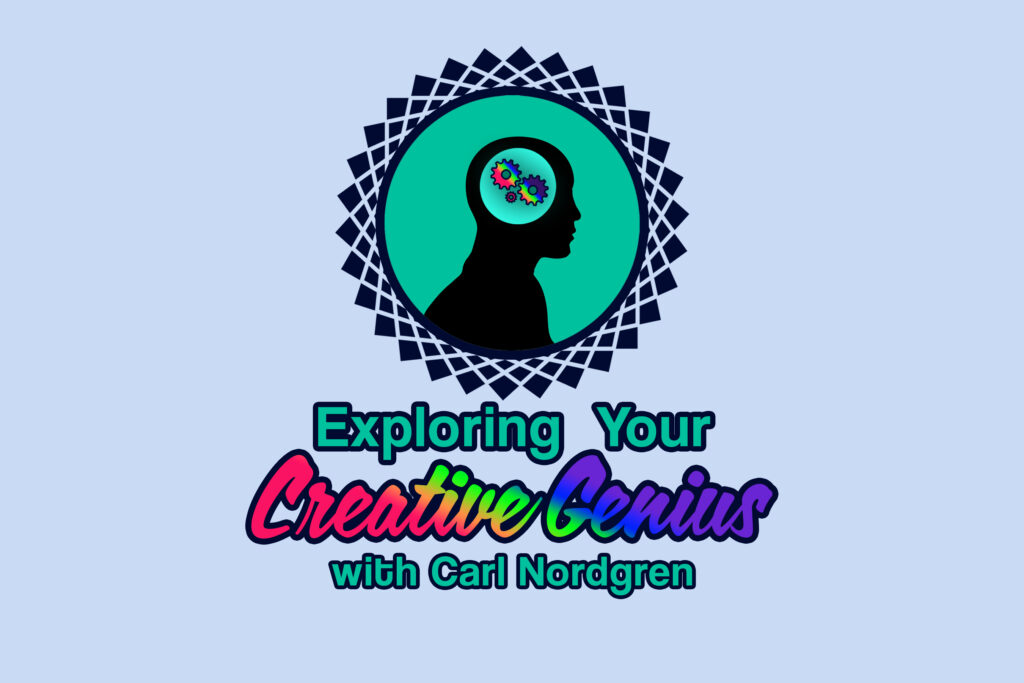Welcome to this bi-weekly series of articles written to help you grow your creative capacity and develop your entrepreneurial instincts and behaviors!
In this first edition, I am eager to convince you that you have a natural-born creative genius and that nothing is more important for your future successes, in all your lived worlds, than growing your creative and entrepreneurial qualities.
To achieve that purpose and recruit you to that view, I need to be entertaining – and hope you’ll find the articles a refreshing lift.
Working with WCHL is a return to my creative roots – along with this series I recently started hosting, “Exploring your Creative Genius,” on Sunday mornings. I was born in Mississippi, spent a chunk of my first 30 years living in small town outside Chicago, but it was when I arrived in Chapel Hill on March 30, 1982 and I went to work for Billy Carmichael at his ad agency that my creative and entrepreneurial life really began – I watched MJ hit the shot against Georgetown as I finished packing and my wife and nine month old baby girl headed down the next day.
Times were tough at the agency when I arrived. Big accounts like the State Zoo were leaving. Others, like the marketing collateral development work supporting fund raising to build the Dean Smith Center, was winding down.
I was hired to help stop the slide and turn things around. It was too late, as Billy was too nice to make the staff cuts that would have given him a chance; I don’t think he’d paid himself for some time.
I did meet three men there – we were in our late 20’s or early 30’s – who would be important in my creative and entrepreneurial life. Alan Norris was Art Director at the agency. Jim Protzman and Steven Lerner had a market research firm, Focus Group, and were working for one of Billy’s clients, CCB; I met them in his office when they were reporting their findings.
Five years later, in 1988, the four of us – along with Archie Purcell – would take Imageworks, the ad agency Alan had started and merge it with Jim and Steve’s market research firm to form FGI. We built our business on two core strategies that were radical departures from industry norms. We had all the marketing functions under one roof – advertising, design, public relations, telemarketing, market research, marketing strategy, field execution teams – partnered with a tight focus on a single industry, the new and rapidly growing cellular industry, in the days when it was still very much a local market business so there were hundreds of companies.
We were on Inc. Magazine’s list of 100 Fastest Growing Private Companies two years in a row, executing our strategy of avoiding competition, not beating competition.
We chose to focus on cellular because during those interim five years, while my future partners were building their companies, I was a pioneer in the earliest days of the industry, helping lead the founding and extraordinary growth of Cellular One of the Triangle, the first to serve this market, and then 21 cellular companies serving markets throughout the South and Midwest. Our success was driven by our ability to establish and build the marketplace narrative of what cellular meant to the particular community in a fashion that served the market and positioned us as the leader.
I will share many lessons with you in this column about the creative and entrepreneurial power of Story. I will share how important it is to tell the market its story, its very best story, as the most effective way to capture their attention to tell your story. The lessons learned at FGI about building powerfully effective teams of creative people will also be shared.
So, join in as we explore your creative genius with tips and concepts and stories learned as a fishing guide, an entrepreneur and creative professional, a Duke professor, a creativity consultant, a father and husband, a lover of animals and the woods, a novelist, a radio host, and a student of all things related to being creative and entrepreneurial.
Your first tip, easy to explain, easy to integrate into your life. Research at the University of Munich tested the impact color has on creative performance. They tested blue, red, yellow, gray, and green, with participants staring for 20 seconds at the color selected for them and then completing four creative exercises. Green was the only color to improve scores, a dramatic 25%. I stare at green twice a day. You should too.
Next, I’ll share the NASA involved research establishing our natural creative genius. See you then!
Here’s a link for a green block. The research used a green block on a screen. I like my green folder that I got at an office supply store.
 “Exploring Your Creative Genius” takes an expansive view on what it means to be creative and entrepreneurial in an ongoing conversation led by Carl Nordgren — entrepreneur, novelist, and lifelong student with decades of experience growing his own creative capacity and assisting others to do the same in exciting new ways!
“Exploring Your Creative Genius” takes an expansive view on what it means to be creative and entrepreneurial in an ongoing conversation led by Carl Nordgren — entrepreneur, novelist, and lifelong student with decades of experience growing his own creative capacity and assisting others to do the same in exciting new ways!
You can also find more ways to explore your creative genius in this column’s companion radio program, broadcasting on 97.9 The Hill WCHL and posted here on Chapelboro!
Chapelboro.com does not charge subscription fees, and you can directly support our efforts in local journalism here. Want more of what you see on Chapelboro? Let us bring free local news and community information to you by signing up for our biweekly newsletter.


